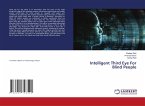The human brain is adept at recognizing humans and
animals in motion. The
visual system effortlessly carries out many different
tasks based on what we see. However, motion detection,
particularly that of other animals and conspecifics,
is one of the most important visual tasks the brain
had to be good at from the perspective of evolution.
Getting away from predators, hunting preys, and
effective social interaction - all of these play
crucial roles for survival of a species. The brain
has therefore evolved to be extremely good at
detecting these types of motions.
However, little is known about the computational
steps, or the neural mechanisms, that make this
possible. In particular, it is unclear whether the
mechanism is any
different from other general purpose recognition
tasks, or if there are specialized computational
abstractions in use. In this book,
analysis of human motion data and psychophysical
experiments are used in an attempt to say
something about what the brain might be doing while
it executes the biological motion recognition task.
It is further
shown that knowledge gained through these experiments
can also be used as a gait recognition tool in
computer vision.
animals in motion. The
visual system effortlessly carries out many different
tasks based on what we see. However, motion detection,
particularly that of other animals and conspecifics,
is one of the most important visual tasks the brain
had to be good at from the perspective of evolution.
Getting away from predators, hunting preys, and
effective social interaction - all of these play
crucial roles for survival of a species. The brain
has therefore evolved to be extremely good at
detecting these types of motions.
However, little is known about the computational
steps, or the neural mechanisms, that make this
possible. In particular, it is unclear whether the
mechanism is any
different from other general purpose recognition
tasks, or if there are specialized computational
abstractions in use. In this book,
analysis of human motion data and psychophysical
experiments are used in an attempt to say
something about what the brain might be doing while
it executes the biological motion recognition task.
It is further
shown that knowledge gained through these experiments
can also be used as a gait recognition tool in
computer vision.








